You’re busy working on a beautiful embroidery project, stitching away with excitement, and then suddenly, disaster strikes – your stitches start skipping.
It’s frustrating, it’s irritating, and it’s enough to make even the most patient of people want to throw their embroidery machine out the window.

But fear not, dear reader, for we are here to unravel the mystery behind skipping stitches and offer you some clever solutions.
So, let’s dive in and tackle this embroidery headache head-on!
5 Causes And Solutions Of Skipping Stitches | Zdigitizing
1. Incorrect Thread Tension
Thread tension is like the Goldilocks of embroidery. It shouldn’t be too tight, and it shouldn’t be too loose – it needs to be just right. When the tension is incorrect, it can cause your stitches to misbehave and go skipping off into the distance.
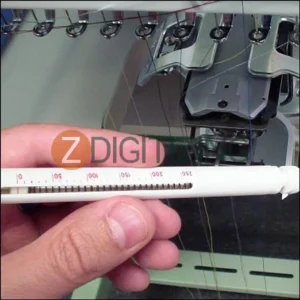
It’s all about finding that sweet spot where the upper and lower threads intertwine perfectly, creating exquisite stitches.
Effects of Incorrect Thread Tension
When the thread tension is too tight, your stitches will look puckered and distorted, almost like they’re gasping for air.
On the other hand, if the tension is too loose, you’ll end up with slack, sloppy stitches that have a mind of their own. Neither of these scenarios is what you’re aiming for, so it’s crucial to master the art of thread tension.
2. Dull or Incorrect Needle
Ah, the humble needle, a tiny tool with mighty powers. Using the wrong needle can lead to all sorts of needle-related nightmares, including skipping stitches.
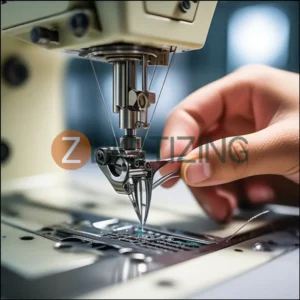
Different fabrics, thread types, and design complexities require different types and sizes of needles. So, make sure you’re using the right needle for your specific embroidery needs, and your stitches will thank you.
Signs of a Dull Needle
A dull needle is like a grumpy old man – it simply refuses to cooperate. If you notice your stitches skipping or your fabric looking more like a battlefield than an embroidered masterpiece, it’s time to inspect your needle.
Bent or dull needles can wreak havoc on your embroidery project, leading to skipped stitches and frayed nerves. Keep an eye out for any visible signs of wear and tear on your needle, and don’t be afraid to retire it when it’s past its prime.
3. Incorrect Hooping or Stabilization
Incorrect hooping or stabilization in embroidery can lead to skipping stitches. This problem occurs when the fabric is not properly secured in the embroidery hoop, causing it to move or shift during the embroidery process.
When the fabric moves, the needle may not align correctly with the intended stitch point. As a result, the needle might either miss the fabric entirely or only partially catch it, leading to skipped stitches. This misalignment disrupts the smooth flow of the stitching process and can compromise the quality of the embroidery design.
Without proper stabilization, the fabric may bunch up or stretch under the needle, especially when working with more delicate or stretchy materials. This instability can cause uneven tension in the threads, further contributing to skipped stitches.
4. Machine Maintenance Issues
Dirt and lint – they may seem innocent, but they can wreak havoc on your stitches. Let’s explore the effects of dirt and lint build-up:
- Build-up in the bobbin area can cause thread to catch and skip stitches.
- Lint in the needle area can interfere with the smooth flow of the thread, resulting in uneven stitches.
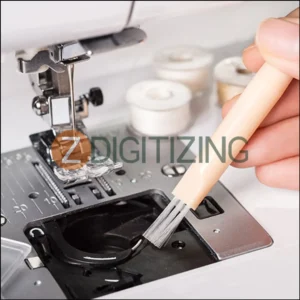
Another common cause of skipped stitches is jammed threads or bobbins. If the thread gets tangled or stuck during embroidery, it can throw off the stitching sequence.
Embroidery Digitizing
&
Vector Art Services
Are you looking for embroidery digitizing and vector art services at low cost with superfast turnaround, guaranteed quality and preview before pay? So, you are at right place. We can digitize and vectorize any type of artwork in your required file format.
5. Design or Digitizing Problems
While machine-related issues are often the culprit behind skipped stitches, sometimes the problem lies in the design or digitizing process.
Assess the design you are working with for any potential issues that might be causing skipped stitches. Look for intricate details, small lettering, or dense stitching that might be challenging for your machine to handle.
Simplifying complex designs or adjusting stitch parameters can often solve these problems.
Solutions for Fixing Skipping Stitches
If you encounter skipped stitches during your embroidery project, don’t panic! There are troubleshooting techniques you can try to fix the issue.
Adjusting Thread Tension
To save your stitches from their skipping adventures, you’ll need to become best friends with your machine’s tension adjustment dial.
Start by experimenting with different thread tensions, making small adjustments at a time until you achieve that elusive “just right” tension.
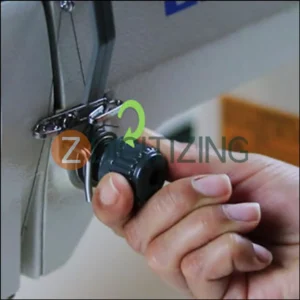
Remember, patience is key – embrace the trial and error process and keep a sense of humor handy for those moments when your stitches decide to dance their way off your fabric.
Replacing and Choosing Needles
To keep those stitches skipping in the right direction, it’s essential to replace your needle regularly. As a general rule of thumb, change your needle after every eight hours of stitching or at the start of each new project.
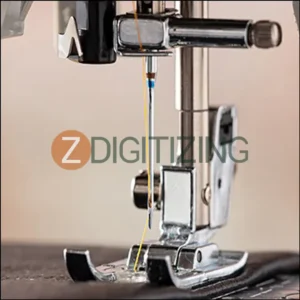
And when it comes to choosing the right needle, don’t be shy to experiment. Different fabrics and designs may require specific needle types, so don’t be afraid to explore your needle options and find the perfect match for your embroidery ambitions.
Correct Hooping
Hooping – it’s not just a circus act!
Proper hooping techniques play a vital role in preventing those dreaded skipped stitches. When you hoop your fabric, it should be taut and secure, not too loose, and not too tight.
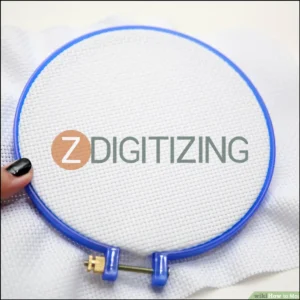
Think of it as giving your fabric a comforting hug, ensuring it stays in place throughout the embroidery process.
Proper Stabilization
Stabilizer – the unsung hero of embroidery. It provides support and stability to your fabric, preventing it from puckering and shifting during stitching.
Using the right stabilizer for your chosen fabric and design can make all the difference in the world of skipping stitches.
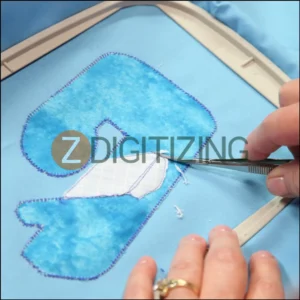
So, make friends with different types of stabilizers, experiment with their weights and properties, and find the one that’s the perfect match for your embroidery dreams.
Embroidery Digitizing
&
Vector Art Services
Are you looking for embroidery digitizing and vector art services at low cost with superfast turnaround, guaranteed quality and preview before pay? So, you are at right place. We can digitize and vectorize any type of artwork in your required file format.
Ensuring Proper Machine Maintenance
Keeping your embroidery machine in top shape is essential for smooth stitching. Just like any other device, your machine needs regular cleaning and lubrication to function properly.
Take the time to clean the machine regularly, removing any buildup and ensuring that all parts are free from obstruction.
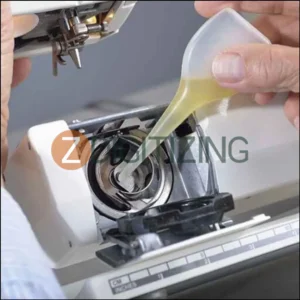
Additionally, follow the manufacturer’s instructions to properly lubricate the machine’s moving parts.
Regularly check the thread and bobbin areas for any knots, tangles, or obstructions. If you notice any issues, take the time to carefully remove the tangled thread or replace the bobbin. This simple step can save you from frustrating stitching problems down the line.
Calibrating and Adjusting the Machine
Sometimes, the settings on your embroidery machine may need a little tweaking to ensure optimal performance. Check the tension settings, needle position, and stitch speed to make sure they are appropriately calibrated for your specific project.
Incorrect settings can cause the needle to skip stitches or produce uneven results. Experiment and make the necessary adjustments based on the fabric, thread type, and design you are working with. A well-calibrated machine is key to achieving high-quality embroidery.
Modifying the Design for Better Stitching
If you’ve identified design-related issues, don’t fret!
There are usually simple modifications you can make to improve the stitching quality. Consider enlarging small details, adjusting stitch density, or reworking problematic areas.
By making these changes, you can ensure that your machine can handle the design without skipping stitches. Don’t be afraid to experiment and make adjustments until you achieve the desired results.
Consulting with a Digitizing Professional
If you’re struggling to troubleshoot design or digitizing problems on your own, don’t hesitate to seek expert advice.
Zdigitizing is a professional digitizer and embroidery specialist who can provide valuable insights and guidance. We have extensive knowledge and experience in creating designs that work well with embroidery machines.
By consulting with us, you can save time and frustration, and ultimately achieve more flawless stitching results.
Winding Up With Offer
Are you looking for amazing embroidery digitizing services? Look no further than ZDigitizing! We provide top-quality embroidery digitizing and vector art services that are perfect for all your embroidery and printing needs.
Guess what? You can get 50% off on your first order on all of our services!
Just chat with us, and within 5 minutes, we’ll provide you with a free quote. We believe in keeping things simple and fast for our customers.
If you found this article helpful, why not share it with your friends? Let them know about our incredible services and discounts. It’s a chance for everyone to experience top-notch digitizing services.
Thank you for reading!
Frequently Asked Questions:
Skipped stitches can occur due to several reasons: incorrect threading, a dull or damaged needle, improper fabric stabilization, or tension issues in the thread or bobbin.
Re-thread the machine, replace the needle with a new one, ensure proper fabric stabilization, adjust thread tension, and check for any mechanical issues with the machine.
Skipped stitches appear as gaps or incomplete embroidery where the thread has not been caught in the fabric, disrupting the continuity of the stitch pattern.
Improper stitching could be due to a variety of factors like misaligned timing, incorrect threading, tension issues, using the wrong needle or fabric type, or mechanical faults in the machine.












